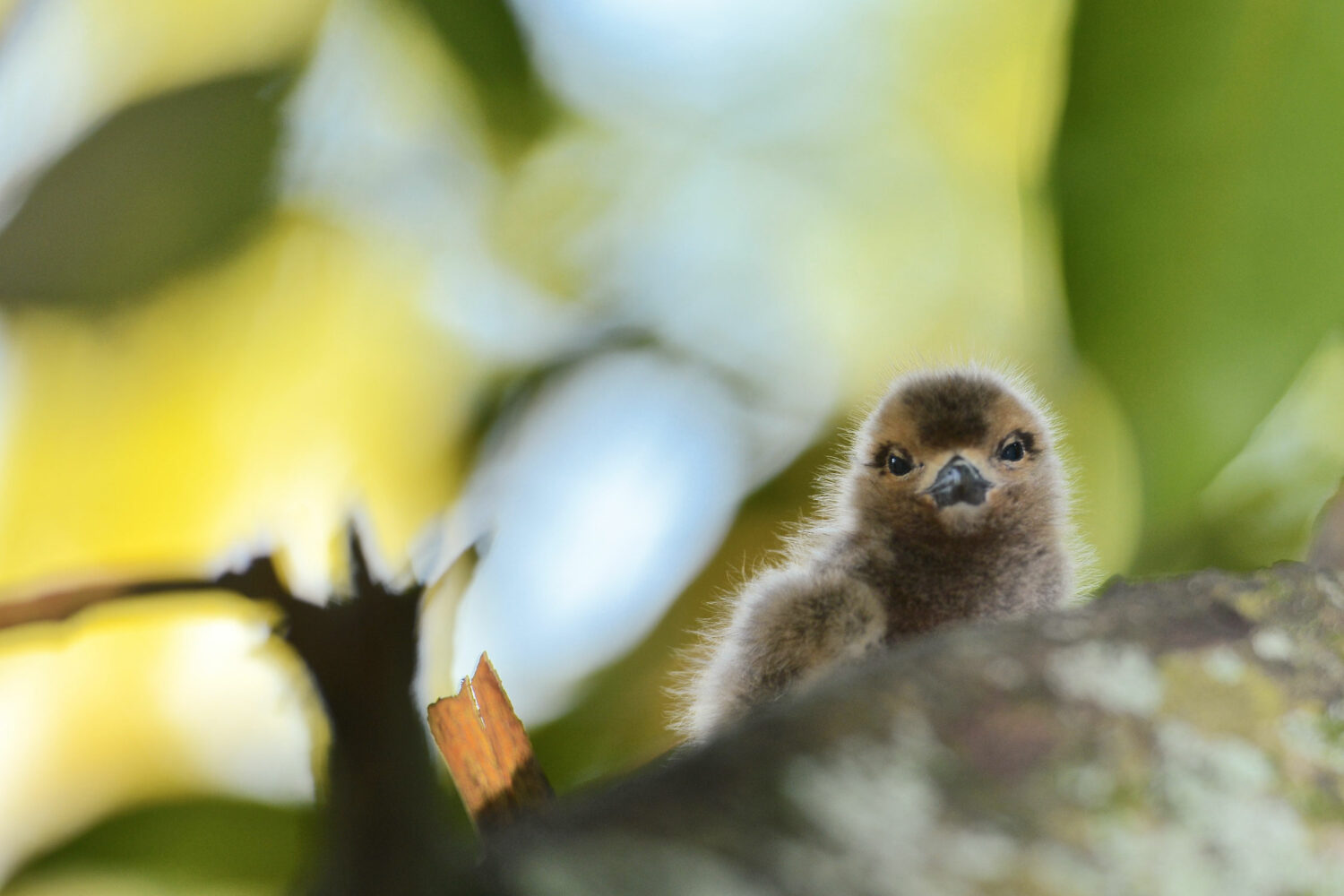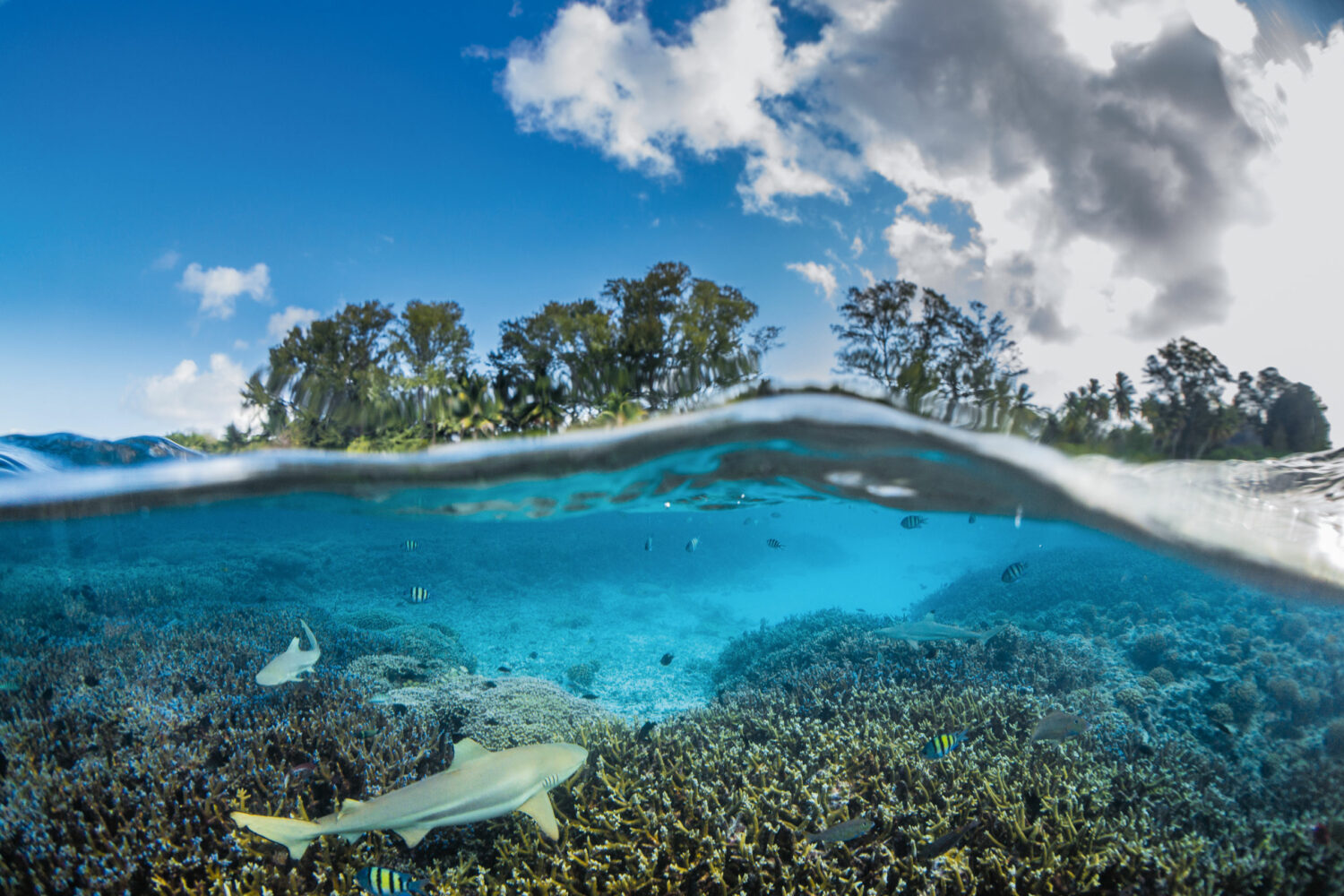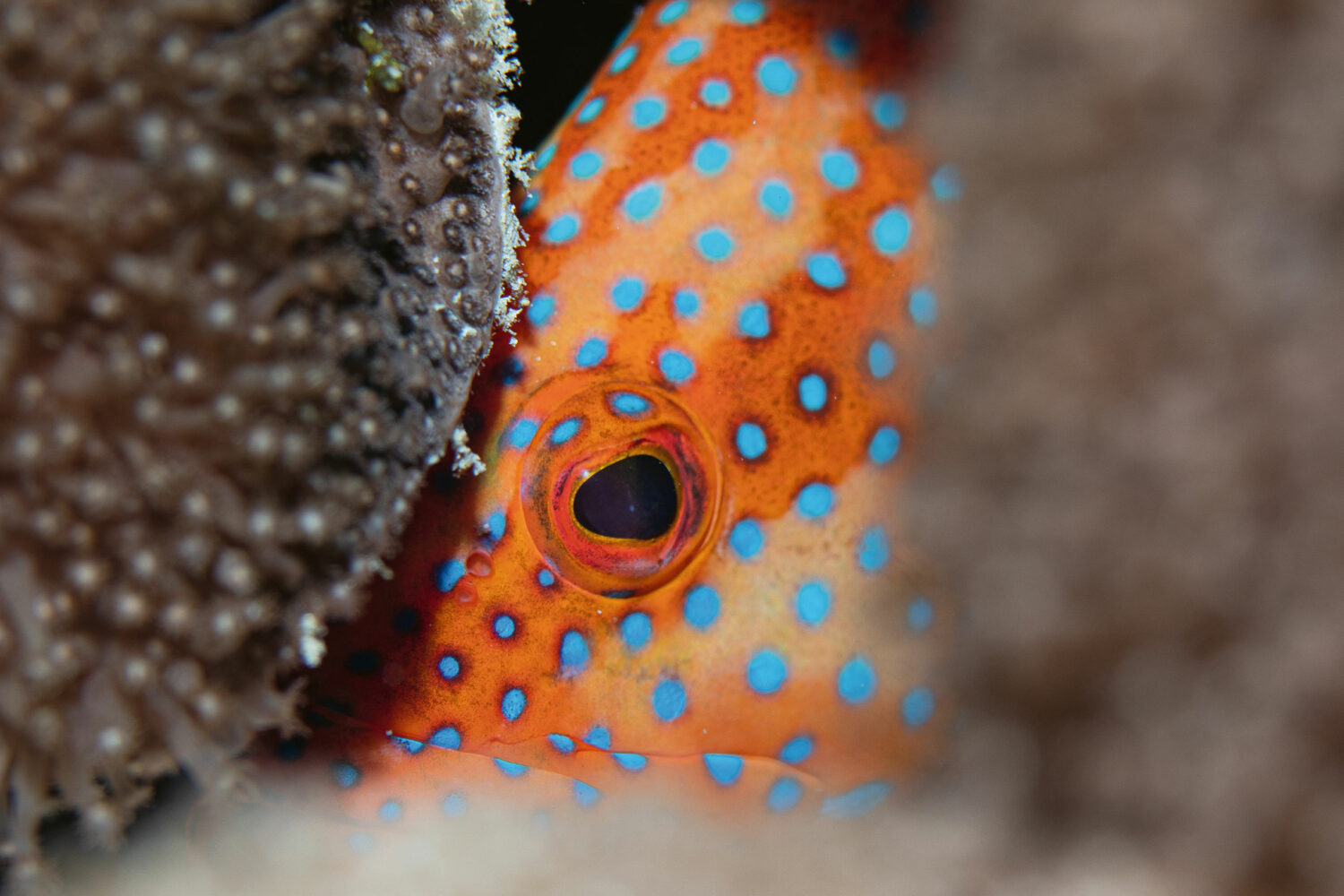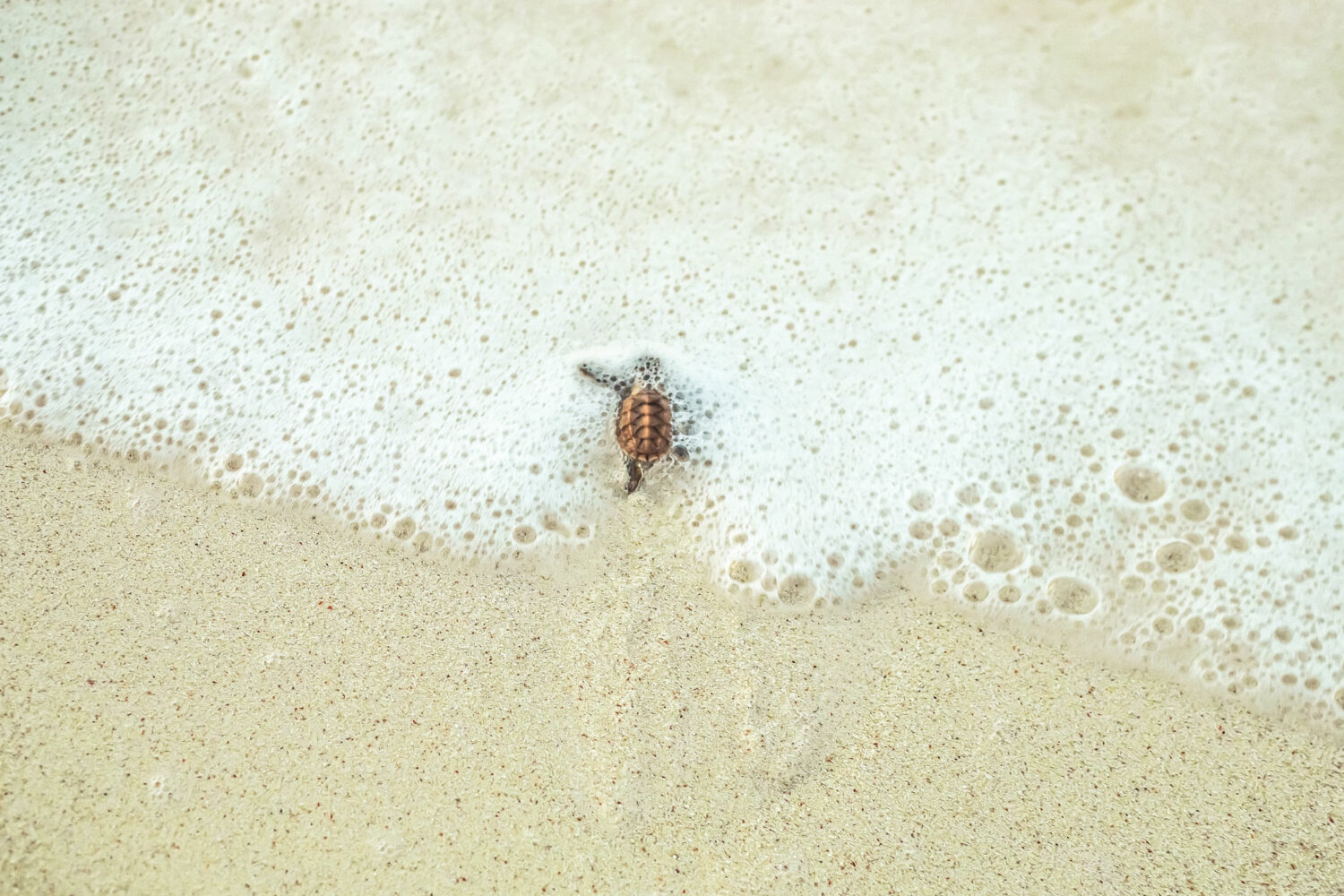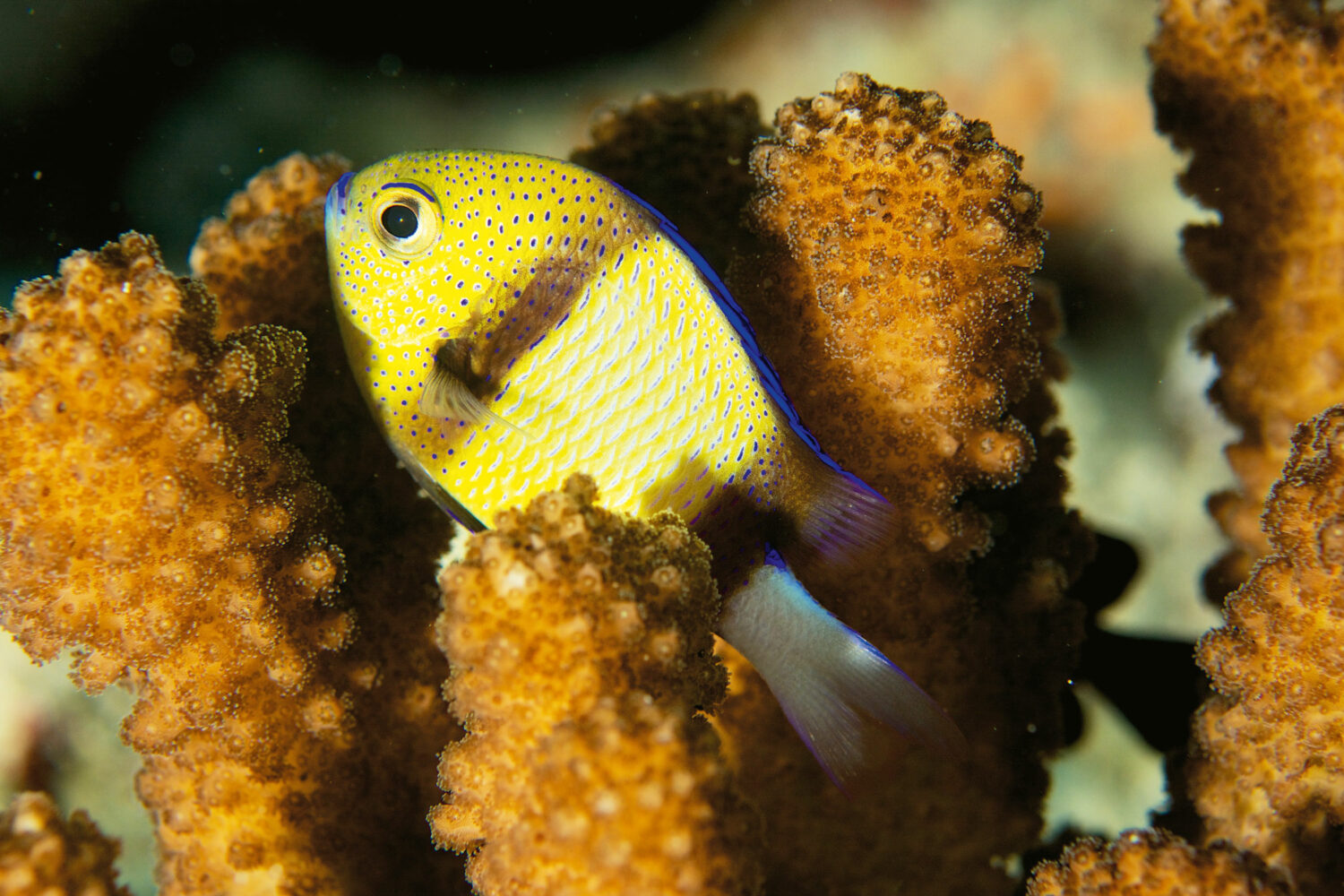Banking on the future
Roughly 1,600 kilometres east of mainland Africa, 115 islands rise from the azure waters of the Western Indian Ocean (WIO). Together, they form the Seychelles archipelago. The mountainous capital island of Mahé, home to more than 90% of the country’s 100,0000-strong population, seems a bustling metropolis. Granitic boulders border the busy beaches. In contrast, the Outer Islands comprise coralline islands forming remote atolls merely a few feet above sea level. Calm waters lap at the white sands of the shoreline or meet mangroves – critical habitats home to juvenile species of sharks and migratory seabirds. Below the surface you’ll find highly productive marine ecosystems that are rich sources of food and livelihoods, supporting jobs for a quarter of a million people in the WIO region. As diverse as the land (and sea) are the people who inhabit it. Seychellois Creole culture is a harmonious blend of different nationalities and cultures. For those who live here, life maintains an element of consistency. The sun rises and sets at the same time year-round, and routine can be found even amongst the capital’s chaos.
Seychelles is only one of 32 countries whose territorial waters fall under the western boundary of the Indo-Pacific Ocean, but it’s one of the region’s greatest contributors to the high endemism (biodiversity found here and nowhere else on the planet) for which the WIO is renowned. In fact, the WIO is one of the regions richest in marine life on our planet, with almost 15% of its biodiversity considered endemic. The richness of biodiversity (the sheer number of different species of corals, fish, sharks, plants and other life) is highest in the WIO along the east coast of Africa and its islands, placing Seychelles at the epicentre of an extraordinary ocean bounty. On land, rapid population growth, densification and urbanisation are the hallmarks of many countries in this region, and while the life-giving waters of the WIO provide vital resources for these human communities, their stability is being eroded by overfishing, habitat degradation from coastal developments and pollution, and climate change.
One of the farthest-flung islands in the Amirantes, D'Arros is near-pristine, having been somewhat sheltered from human access. Photo by Dillys Pouponeau | © Save Our Seas Foundation
Off the coast of Somalia and Tanzania, for instance, trawlers – a type of fishing vessel that pulls nets along the ocean floor or in midwater – are blamed for wiping out entire schools of tuna, including the young ones, causing dramatic population collapses. Often, these vessels are operating illegally (something called illegal, unreported and unregulated, or IUU, fishing). And from Seychelles to the coast of Mozambique and South Africa, coral reefs are on the brink of collapse – some predict within the next 50 years. Sustained, heightened temperatures across the WIO have already led to radical declines in coral cover across the region. As the waters warm, the corals expel symbiotic algae which live in their tissue, causing them to turn white (a phenomenon known as bleaching). These events are becoming more common, with reefs across the WIO classified as critically endangered at risk of becoming functionally extinct in the near future. With 43% of sharks and rays also threatened with extinction in the WIO region, things are getting serious. Scientists predict widespread starvation in the WIO by 2035.
Here in Seychelles, it’s clear that the hustle and bustle of daily life doesn’t distract from the steady decline of the surrounding reefs. A deep understanding and concern is felt among the Seychellois, who pride themselves on the nation’s natural beauty. Travel 225 kilometres southwest of Mahé and you’ll discover the far-flung Amirantes Island group. Within lie D’Arros Island and its sister atoll, St Joseph. Those arriving on these islands for the first time are amazed by their tranquillity, but moreover, the near-pristine nature that exists in every nook and niche – a striking contrast to the bleak outlook across the WIO more generally. It’s precisely this geographical isolation that makes this such a special place, a serene stronghold where life can continue mostly undisturbed and unharmed by humans. For scientists, it’s a paradise. It’s that final frontier, a place of unbelievable biodiversity that gives a unique opportunity to study a system that remains as it should. D’Arros Island and St Joseph Atoll act as a template for which goals for ecosystem restoration can be set. They’re a protected place where the ocean can recover and replenish, a source of rejuvenation for the life they host.
Access to wild places where children can find sanctuary in nature are just as important as ensuring they learn how to take care of the planet. Photo by Dillys Pouponeau | © Save Our Seas Foundation
Recognising this, in 2004, a research station was founded on D’Arros, which has been run by the Save Our Seas Foundation since 2012. A core team of four passionate scientists inhabit the island year-round with a clear mission – to preserve and showcase the ecological integrity of D’Arros Island and St Joseph Atoll through research, monitoring, restoration and education. Programme director Henriette Grimmel explains that they’ve learnt to always be on the lookout and to expect the unexpected, exemplified by the team’s recent encounter with a nesting giant tortoise – a rare opportunity to observe the laying process of an endemic and endangered species. For research director Dr Robert Bullock, D’Arros and St Joseph have become his favourite places in the world. Completing the core team are research officers, Ellie Moulinie and Dillys Pouponeau. Born and raised in Seychelles, these accomplished ocean-loving women completed their degrees in Environmental Science at the University of Seychelles and have since clocked up quite the conservation CV, working on numerous projects throughout the nation. Ellie and Dillys understand better than anyone just how extraordinary life and work on D’Arros is.
‘You wake up every day and look up, and are completely surrounded by biodiversity – endemic birds, seabirds, tortoises, native flora and fauna,’ Ellie’s eyes light up as she continues, ‘I still cannot quite comprehend it, but D’Arros just gives this feeling of being so lucky to be a single person in a massive forest, undisturbed, with only the sounds of nature around you.’ It’s a spectacular place to do science. For Ellie, much of her day consists of swabbing the genital region (called the cloaca) of juvenile blacktip reef sharks and sicklefin lemon sharks in St Joseph Atoll. As Ellie explains, ‘obtaining faecal DNA from shark cloacal swabs is a more accurate way (than traditional techniques, such as stable isotopes) to find out about an individual shark’s diet,’ she continues, ‘we’re basically investigating shark poop to see what it’s been eating.’ Ellie is then able to answer critical questions: How does diet change with life stages? And how do these two shark species share the space? We already know that these baby sharks fare better in the protected, prey-rich waters of D’Arros and St Joseph than other similar coastal habitats across the world. And years of dedicated tracking data on sharks from the Save our Seas Foundation D’Arros Research Centre (SOSF-DRC) has helped to shape the marine protected area (MPA) that now legally formalises the sanctity of this ocean ecosystem.
Dillys dedicates her time to studying the rather different diet of the planktivorous reef manta rays. ‘We take plankton samples in different locations when we do, and we don’t, see the mantas,’ describes Dillys. ‘We can then investigate the biomass, abundance, and species of plankton present. Is there a threshold for them starting to feed?’ Gaining a deeper understanding of the foraging habits of manta rays helps scientists in Seychelles and further afield to understand how the species might be affected by climate change, which affects the distribution of their planktivorous prey. In fact, understanding manta rays here is also critical for ensuring sustainable tourism in Seychelles. With 89% of tagged reef mantas detected a mere 2.5 kilometres from the shoreline at D’Arros and St Joseph between 2013 and 2017, the SOSF-DRC has shown that this remote blip on the map might not be visited by tourists themselves, but it’s a vital stronghold that’s relied upon by the reef mantas that swoop across to other tourist hotspots across the Amirantes for the rest of the year.
It’s hard to link the relevance of remote islands flung far from any mainland to the lives and livelihoods of Seychellois and WIO citizens. But delve into the research findings of the SOSF-DRC in the past decade, and it becomes clear that D’Arros and St Joseph shine as a lifeboat for biodiversity in the region. The shoreline here is the only location in Seychelles that supports nesting and foraging populations of both endangered green and critically endangered hawksbill turtles. In fact, it may represent the most important location for hawksbills in the entire WIO. Turtles tracked from D’Arros swim as far as mainland Africa, and the sharks that are monitored through a vast network of ‘listening’ stations have travelled even further afield. The endangered humphead wrasse hunkers down to find some of its only known viable refuge habitat here. D’Arros and St Joseph Atoll are a sanctuary for replenishment that ocean nomads rely on, a haven that shelters the last viable populations of some species and a place of incredible discovery where new species can shape our understanding of Seychelles’ natural heritage. It’s also possibly a site of investment, where healthy populations can seed and sustain surrounding areas. Here, corals appear to have fared better in recovering from the devastating global coral bleaching episode of 2015/2016, and the results of a rapid biodiversity survey in 2017 recorded a stupefying 514 fish species, which represents 60% of Seychelles’ 889 known reef-fish species. D’Arros and St Joseph Atoll might just show us that when important coral habitats are protected, fish can grow to maturity, and when the aggregation sites of charismatic megafauna are conserved, we have a chance to bolster fisheries and tourism, securing jobs and food security. If biodiversity continues to thrive here, the impact of D’Arros and St Joseph Atoll could far outweigh its relatively minute size in a vast ocean and represent a stronghold for Seychelles and an ailing WIO.
Tracking data have shown how critical D’Arros Island is for reef manta rays, which show a strong attachment to, and preference for, the marine protected area (MPA) that protects them here. Photo by Dillys Pouponeau | © Save Our Seas Foundation
As remote, but not entirely untouchable ecosystems, the SOSF-DRC team now also have to look toward the trends of the future. How might, what they’ve learnt about the biology and ecology of these islands, change? Take the juvenile sharks which use the nursery sites of St Joseph Atoll. These areas are critical for their health and survival, but climate change is causing them to become ecological traps – the waters are getting warmer, yet the sharks have nowhere to go. It’s a multi-generational problem that requires longer-term thinking to solve, something which the current custodians of these extraordinary islands are acutely aware of.
Future success here is inherently reliant on nurturing the next generation in Seychellois-led conservation, a fundamental responsibility of the SOSF-DRC. In 2022, the team re-launched the D’Arros Experience, an annual two-week-long camp event that aims to engage young Seychellois on the importance of the ecosystems that form part of their national heritage. The intent: to get them excited about this stuff! Each year 16 competition-winning kids travel to the islands, where they’re provided with practical, hands-on field experience and the opportunity to experience what they have in their backyard.
In the end, as much as the wildlife, it’s the people that make this place. Though it can be tough living in a small team on a remote and isolated island, the SOSF-DRC scientists feel privileged to live and work here. And in a strange way, it’s each individual’s preference to work with animals over humans that unites them as people. As Henriette says, a good wildlife encounter here can feed you for months. Be it the mantas that bring the team into their best mindset, or the adrenalin-filled nightly turtle ‘treasure hunts’ during nesting season, life on D’Arros is constantly evolving. The team is proud to be driving this change in a positive direction, securing the future of these magnificently biodiverse islands for all. Their work here amounts to something much bigger than their day-to-day tasks: by deepening our understanding of this near-pristine habitat, the SOSF-DRC are providing the knowledge that is critical to protecting livelihoods and tourism in the Western Indian Ocean region for decades to come.

